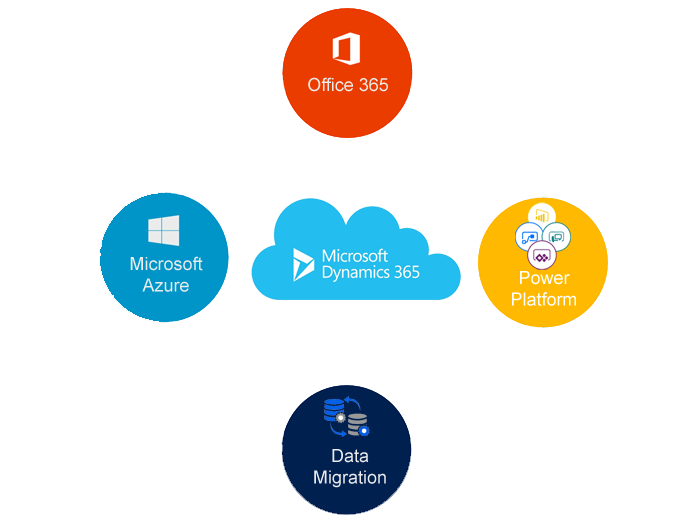CUSTOM WORKFLOW ACTIVITIES
-Allows building custom steps that are available for use in the web workflow designer.
-Built on Windows Worklfow Foundation V4.
-Work for on-premise and CRM online deployments
– Can be used in workflows or dialogs.
————————————————————————————————————————–
Overview of CRM Workflows
–– Rule: Define the logic that is executed when a specific triggering event occurs on a record.
— Events: Assign, Attributes Chnage(Update), Change Status, Create, Delete and On Demand
–Conditions: Check values to provide rules for what actions to perform.
–Actions: Create Record, Update Record, Assign Record, Send Email, Start Child Workflow, Change Status, Stop Workflow
————————————————————————————————————————–
OVERVIEW OF CRM DIALOGS
-Input Arguments: Data that is passed from a parent dialog.
-Variable: Store intermediate values as users move through the dialog.
-Pages: Provides the body of the dialog by adding prompts and responses
-Prompts & Responses: Poses a question to a user and captures the response.
-Actions & Conditions: Checks values and performs specifics tasks.
——————————————————————————————————–
WORKFLOW EXECUTION WITH CUSTOM ACTIVITIES
Workflow
step1 -Check Condition
step2 – Update Record
step3 -Your Custom Activity
————————————————————————————————————————–
CUSTOM ACTIVITY SCENARIOS
-Complex calculation
-Performing actions on child records
-Pull a customer’s credit score from a 3rd party to be used for loan approval
-Any Integration with other systems called on demand.
– Any scenario where you want to surface custom code in the CRM workflow editor.
CUSTOM WORKFLOW ACTIVITY CLASS DIAGRAM
Without Developer Toolkit
–CodeActivity Class
–Your Custom Class
–code example:
public sealed partial class CustomActivity : CodeActivity
{
protected override void Execute(CodeActivityContext executionContext)
{
}
}
With Developer Toolkit
–CodeActivity Class
–WorkflowActivityBase Class
–Your Custom Class
–code example:
public sealed partial class CustomActivity : CodeActivity
{
public override void ExecuteCRMWorkflowActivity(CodeActivityContext executeContext, LocalWorkflowContext crmWorkflowContext)
{
}
}
————————————————————————————————————————–
WORKING WITH PARAMETERS
-Used to configure a workflow activity
– Exposed via the worklfow editor
–CRM supports two types
— input and ouput
–Values are populated at time of execution of cutom activity
The DefaultAttribute class allows you to specify a default value for an input parameters
Declaring Parameters
[RequiredArguments]
[Input(“InputEntity”)] ————-1
[ReferenceTarget(“account”)]
public InArgument<EntityReference> inputEntity {get; set;}
[Output (“TaskCreated”)]
[ReferenceTarget(“task”)] —————–2
public OutArgument<EntityReference> taskCreated {get; set;} —–3
protected override void Execute(CodeActivityContext executeContext )
{
}
————————————————————————————————————————–
Getting and Setting Parameters Values
Setting and getting values must is done using the Set/Get methods and referencing the execution context
Guid accountId = this.inputEntity.Get(executionContext).Id;
this.taskCreated.Set(executionContext, new EntityReference(“task”, taskId));
————————————————————————————————————————-
Working with services
The Workflow ExecutionContext.GetExtension method provides access to the CRM services like
–Organization Service
–Tracing Service
IWorkflowContext context = executionContext.GetExtension<IWorkflowContext>();
IOrganizationServiceFactory serviceFactory = executionContext.GetExtension<IOrganizationServiceFactory>();
IOrganizationService service = serviceFactor createOrganizationService(context.UserId);
Working with Services using Developer Toolkit
public class CustomWorkflowActivity : WorkflowActivityBase
{
public override void ExecuteCRMWorkflowActivity(CodeActivityContect executionContext, LocalWorklfowContext crmWorkflowContext)
{
crmWorkflowContext.Trace(“Plug-in is Starting”);
var whoamiResult = crmWorkflowContext.OrganizationService.Execute(new WhoAmIRequest());
}
}



